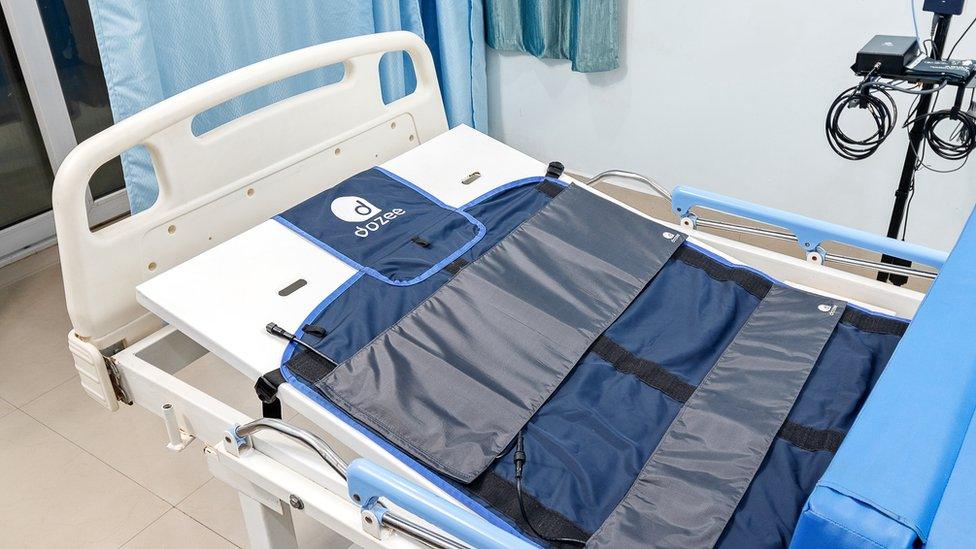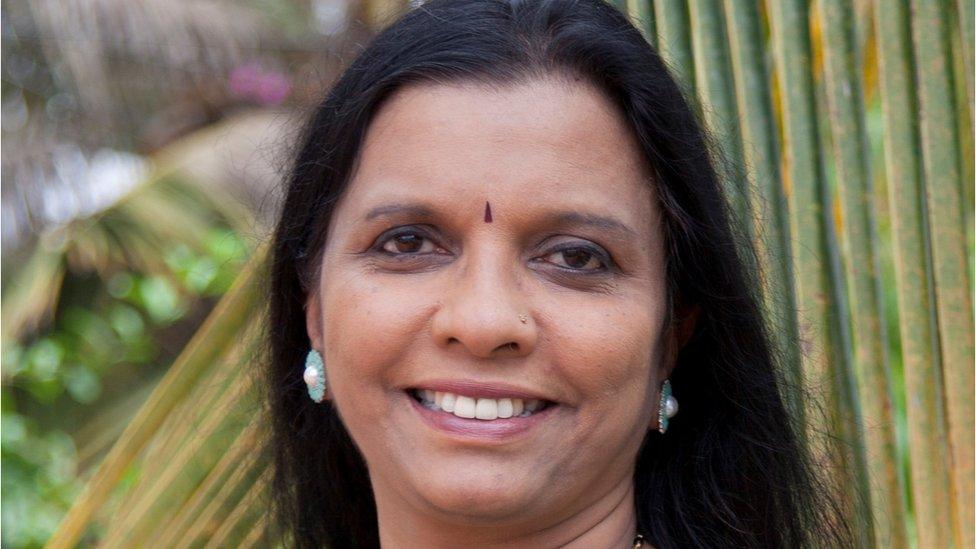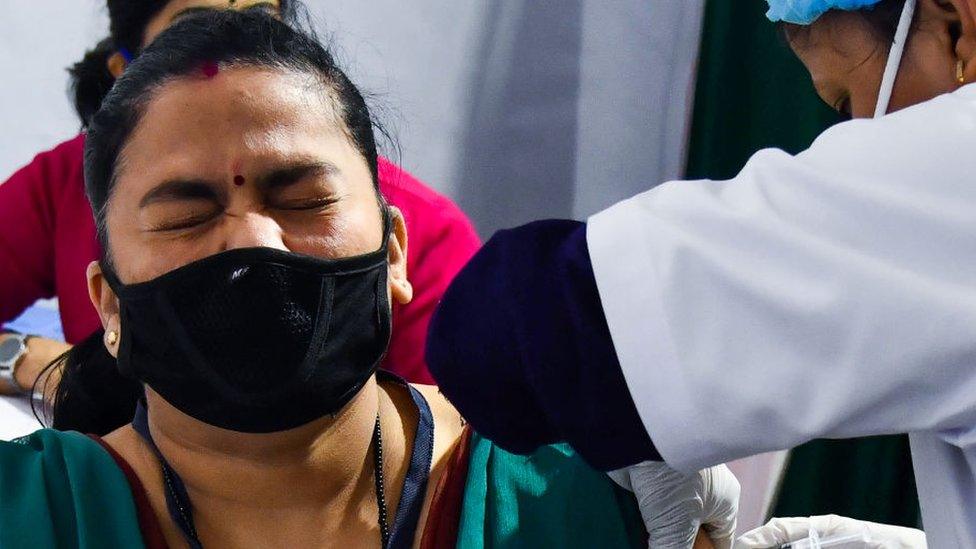Can tech help revive India's 'crumbling' health system?
- Published

Dr Sangram Kapale ran a giant Covid treatment centre in Maharashtra during the pandemic
The first wave of Covid-19, that swept India in early 2020, was a gruelling experience for Dr Sangram Kapale and his colleagues.
"The kind of mental pressure we were all going through is very difficult to put in words," he says.
"It was about saving lives with minimal resources. We had a lack of medicine, beds, oxygen.
"The lack of skilled manpower, like paramedics, was another issue. We were forced to use medical students who had no practical experience of handling patients."
Dr Kapale was in charge of a temporary Covid treatment centre in Pune, Maharashtra which had 800 beds. The centre became overwhelmed with patients, and anxious family members gathered outside.
"On one hand, we were doing everything within our capacity, or beyond, to fight Covid and save lives, and on the other hand we were accused of neglect by the relatives because they didn't know what was happening inside."

Staff shortages were a problem when Covid hit India in 2020 meaning some wards had to rely heavily on medical students
Much of the chaos back then can be attributed to lack of resources, according to health care workers. Pre-pandemic, India reported one of the lowest levels of public spending on healthcare in the world.
In 2019, spending on healthcare was equivalent to just 1.5% of India's gross domestic product (GDP, external). By comparison, China spent 6.7% of its GDP, external on health in 2019, and in the UK that figure was 10.2%, external.
Since then, the Indian government has ramped-up its spending and there is a target to spend 2.5% of GDP, external on health by 2025.
Some are hopeful the devastating impact of the pandemic was a turning point for India's entire healthcare system, with a future focus on technology and innovation.
"All aspects of access to healthcare, diagnostics and life-sciences are moving ...to low-cost and high-tech," says Akriti Bajaj, an analyst who focuses on healthcare at Invest India, a government funded company promoting investment.

Dozee uses a sensor beneath the bedsheet to monitor a patient's health
There are thought to be more than 6,000 start-ups in the Indian healthcare sector, one of those is Dozee. The firm's technology involves using a smart sensor underneath a patient's bedsheet on a hospital bed.
It tracks the micro-vibrations produced by the body when the heart pumps blood, and keeps track of a patient's breathing and other movements. These observations are then translated in to data and processed by artificial intelligence-based algorithms which, if anything unusual is detected, can alert nurses and doctors at a central monitoring station.
The company wants to install its technology in more than 1,000 hospitals and 50,000 beds by the end of 2022.


"Our idea was to simplify the entire [monitoring] process, make it more 'patient-centric' and bring the technology to the wards, and even to patients' homes," says the company's founder, Mudit Dandwate.
Mr Dandwate believes technology could boost the quality of healthcare across India.
"In India, the crumbling healthcare infrastructure was laid bare [by Covid] - poor hospital infrastructure; acute shortage of doctors; nursing staff and equipment and specialised treatment facilities, particularly in primary healthcare centres, in rural areas.
He says government spending on healthcare has increased over the last two years and both the public and private sector will scale-up their facilities - with technology playing a "key role" in that transformation - in the coming years .

Dr Geetha Manjunath hopes her firm's technology will improve the detection of breast cancer
Another health tech entrepreneur, Dr Geetha Manjunath, founded Niramai in Bangalore, in 2016. She wanted to improve cancer screening, particularly in young women.
"Unlike in Europe and the US, where early detection is enabled through regular, systematic screening programmes, India sees high mortality rates, due to late-stage detection," she explains.
Dr Manjunath says that in India, more than half of breast cancer cases are seen in women under 50 years of age and traditional X-ray detection has low accuracy among this group, external.
So, her firm developed a technique for detecting early-stage breast cancer using a small, portable screening device.
A high-resolution thermal sensor is used to measure the temperature variations on the patient's chest, AI then analyses these 400,000 temperature points to generate a report and mark any abnormal regions.
The thermal imaging is simple to use, meaning the test can be done by lower-skilled health workers, working in more remote areas of India.
Dr Manjunath says the device makes a more systematic screening programme feasible and that earlier detection could, in turn, reduce treatment costs and save lives.

A ramping-up of India's vaccination programme has helped bring Covid under control
So, what do doctors make of the new technology appearing on some wards?
Dr Manjunth HG, head of the anaesthesia department at KR hospital in Mysore, has used Dozee's system. He says that, while the technology is useful, in his opinion it has its limitations.
"AI has a long way to go, although it is helping the medical fraternity in a great way, it cannot replace humans, ever. Even if AI is helpful, we need doctors and human presence in ICUs and hospitals. So, it's just an assistance for us."
Back in Pune, Dr Sangram Kapale is just relieved that, after a second, devastating wave of Covid in 2021, a national vaccination programme appears to have brought the virus under control for the time-being.
"After the vaccinations, the severity of the disease has definitely reduced. As a community, now we have to face whatever it throws at us in future."